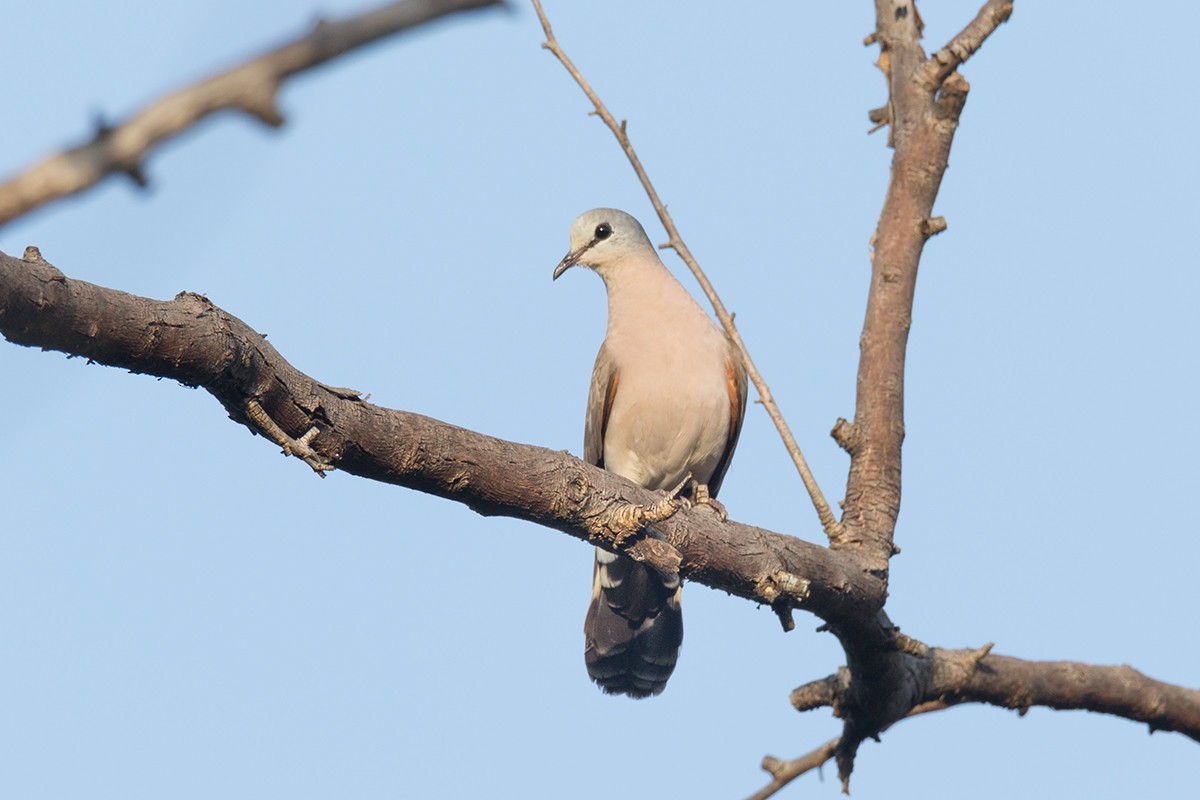Black-billed Wood Dove
A species of Wood-doves Scientific name : Turtur abyssinicus Genus : Wood-doves
Black-billed Wood Dove, A species of Wood-doves
Botanical name: Turtur abyssinicus
Genus: Wood-doves
Content
Description General Info
 Photo By Wich'yanan Limparungpatthanakij
Photo By Wich'yanan Limparungpatthanakij Description
The black-billed wood dove (Turtur abyssinicus) is a pigeon which is a widespread resident breeding bird in a belt across Africa just south of the Sahara Desert. This species is abundant in near desert, scrub and savannah. It builds a stick nest in a tree, often an acacia, and lays two cream-colored eggs. Its flight is quick, with the regular beats and an occasional sharp flick of the wings which are characteristic of pigeons in general, and it tends to stay quite low. Black-billed wood dove is a small plump pigeon, typically 20 cm in length. Its back, hindneck, wings and tail are pale grey brown, and the folded wings have dark metallic patches. There are two blackish bands on the back. The forehead, crown and nape are bluish grey, fading to whitish on the face. The underparts are pinkish, becoming whiter on the belly. The bill of this dove is, of course, black. When flying, black-billed wood dove shows chestnut in the underwing. The call is a persistent fluted coo-coo-cu-coo. Sexes are similar, but immatures are duller than adults, scaly below, and lack the wing spots. Black-billed wood doves eat grass and other small seeds. They are quite terrestrial, and usually forage on the ground. They are not very gregarious, but form large flocks at waterholes. 
Size
20 cm
Nest Placement
Tree
Feeding Habits
Black-billed Wood Dove primarily consumes grass and herb seeds, including species like Panicum laetum, which makes up more than half of its diet by weight. It also eats larger seeds from Sorghum, Pennisetum, and Oryza. Its foraging habit is adapted to a diverse seed-based diet.
Habitat
The black-billed Wood Dove is prevalent in arid to semi-arid habitats, with a particular fondness for savanna woodlands dominated by Acacia and Combretum species. This species is also known to inhabit bushy areas surrounding desert wells, woodland fringes near marshes, and the dense peripheries of forests. It shows a preference for robust woodland and forest environments, and is commonly observed in agricultural landscapes, such as cassava plantations. During drier seasons, the black-billed Wood Dove tends to congregate in vegetation that is denser and situated closer to water sources.
Dite type
Granivorous
General Info
Feeding Habits
Bird food type

 Photo By Wich'yanan Limparungpatthanakij
Photo By Wich'yanan Limparungpatthanakij Scientific Classification
Phylum
Chordates Class
Birds Order
Pigeons and doves Family
Dove Genus
Wood-doves Species
Black-billed Wood Dove